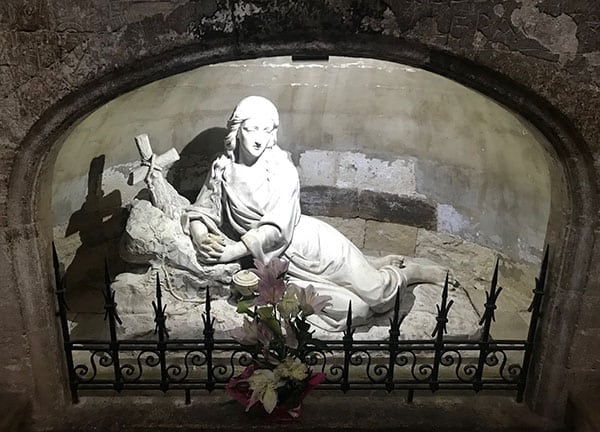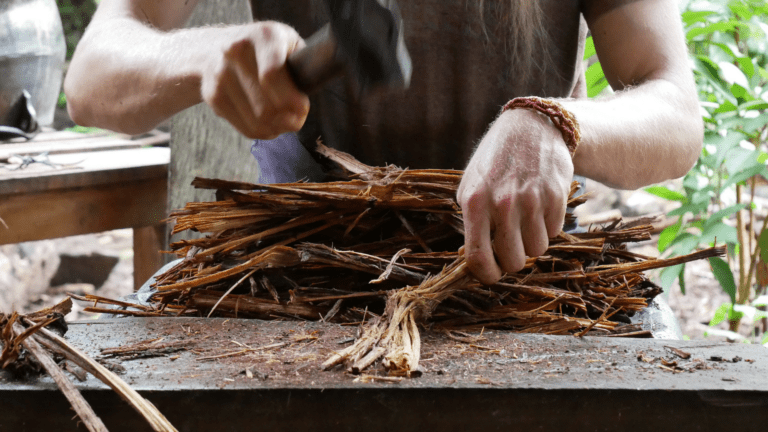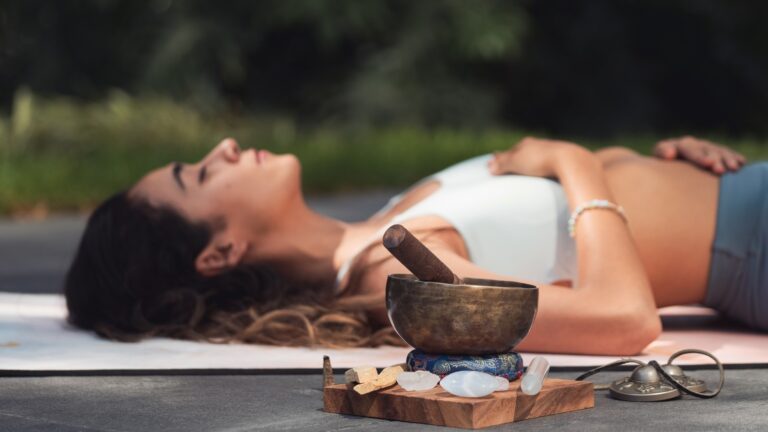Mary Magdalene After the Crucifixion
has it that Mary Magdalene landed in the South of France following the Crucifixion of Christ. While I visited Saintes-Maries-de-la-Mer as the landing spot of Mary’s boat, where she landed is up for debate. There are a few towns that make this claim. Where she lived and died is also up for debate. It is fully accepted, however, that she came to France and spread the teachings of Christ following his death. It is likely that The Cathar religion is based on the very teachings of Mary and Jesus. They called their religion, the pure religion.
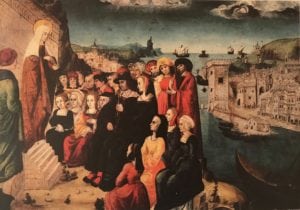
Some say Jesus came with Mary and recovered from his near-death experience, convalescing in the healing waters at Rennes-les-Bains. Sounds like a Dan Brown novel, right?
Dedicated to Mary Magdalene
Nearly every church, spring, monument in the South of France is dedicated to Mary M. Their belief that it is so, makes it real for the people who celebrate her living and teaching here. The belief that she came is long held and seen in art throughout the ages. Here is a painting called Preche de la Madeleine in Marseilles. This painting is from 1515. If you Google Mary Magdalene, you will notice several consistencies within each image. She is most often pictured with a skull, book, and an alabaster jar from which she anointed Jesus. She is most often wearing red. She is commonly seen in a boat to represent her arriving on the shores of France, brought by the current in a rudderless boat. She is often teaching.
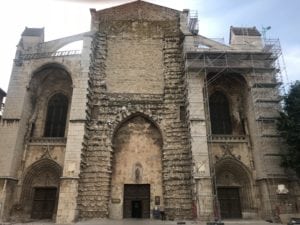
On this trip, I spent a day investigating the sites dedicated to Mary M in the east, St. Maximim, St. Baume and Saintes-Maries-de-la-Mer.
My first stop off the autoroute was Saint-Maximim-la-Sainte-Baume, 2.5 hours east of Pezanas, where we are staying. It was a Sunday and much to my surprise, I was the only one in the church at 9:00 in the morning. The church is under construction, very heavy and dark, and relatively NOT ornate by Roman Catholic standards. In fact, this image makes it look like a ruin. It is in the crypt at Saint-Maximim-la-Sainte-Baume where Mary’s skull is housed. It is near impossible to see the reliquary due to the ornate screen in front of it. The skull is encased in a golden reliquary that is made to look like flowing hair. This reliquary is walked through the city once a year on the feast day of Mary Magdalene, July 22.
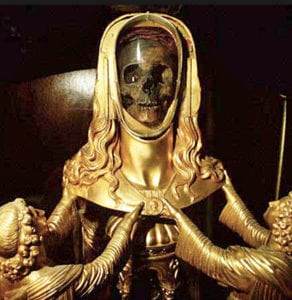
The Cave of Ste. Baume
The second stop on my day trip was Ste. Baume, the cave where Mary Magdalene taught and, some say, lived. It was about an hour south of the church, down a one-lane windy road with traffic coming in both directions. This treacherous road wound me up to the base of a large mountain with solid rock face near the top. From the bottom you could barely see the structure opening. Tourist sites in France are fantastic, easy parking, no fees to park, no fuss. The French make it simple for you to enjoy their treasured spaces. I parked on a dirt path that wound into the forest and began climbing the road to the top. There were lots of people hiking up and coming down. When I reached the top, mass had just begun. It was such a surprise to experience a French mass in a cave church. The place was packed with people, all of whom were Catholic judging, from the communion procession. In the Catholic church, if you are not Catholic, you are not welcome to take communion. Everyone took communion.
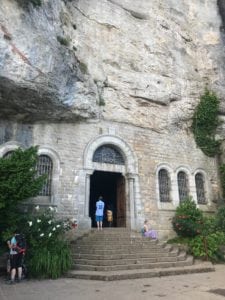
This cave has been a recorded sacred monastic site since 415. It is currently run by the Dominicans who have held it since 1295. It was breathtaking.
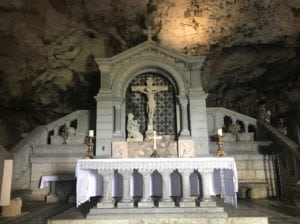
The third stop on the journey was Saintes-Maries-de-la-Mer, a beach town thought to have been the landing spot of Mary M and her entourage when they first came to France. Like all the beach communities in France, the sea-side village is filled with touristy shops of blow up toys and cheap clothing spilling out into the streets, outdoor cafes and pedestrians walking haphazardly about. The water is beautiful and surf, very gentle. The church in this village is filled with images that represent Mary Magdalene coming in her boat, and hundreds of burning candles, lit by pilgrims in search of Mary’s intervention. Strangely enough, if you did not know the historical significance of Mary M landing at this spot, you would likely not discover it while meandering about. It is mostly just a beach town with revelers. All the Mary Magdalene sites are fairly downplayed.
It was well worth the trip south. The interesting thing about this area is that it is the land of the white horses. There were no less than 10 horse rental shops along the way to the beach, all renting white horses.

